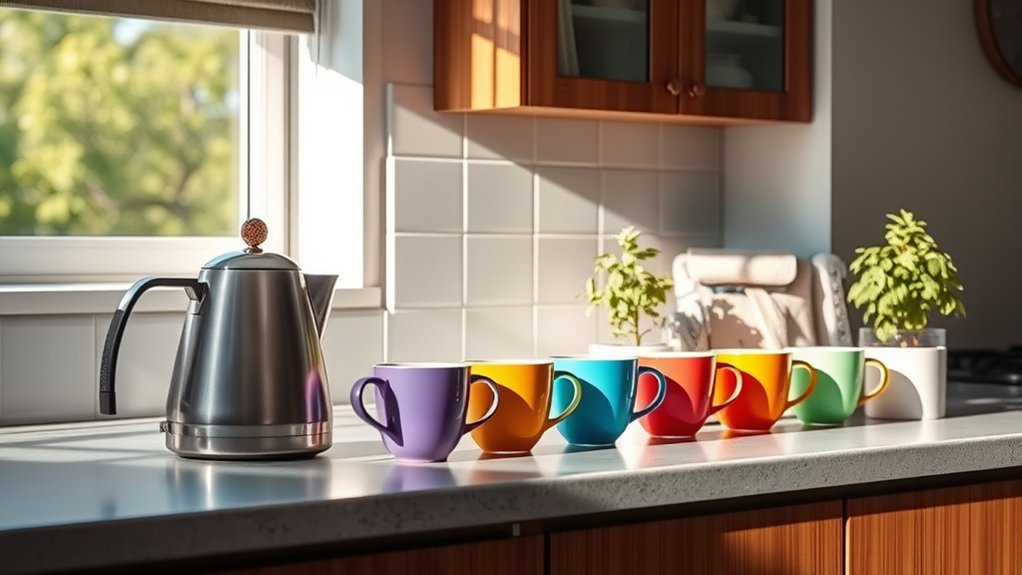Imagine a young explorer setting sail on a new adventure—this is what shifting to cups feels like for your child. It’s important to approach this change with care and understanding. By choosing the right cup and introducing it gradually, you can create a supportive atmosphere. As you guide them through this journey, you’ll discover effective strategies that not only ease the process but also foster their independence. Let’s explore these tips together.
Choose the Right Cup
When you’re ready to make the switch to cups, it’s essential to choose the right one for your needs. Consider your flow, lifestyle, and comfort level. If you have a heavier flow, a firmer cup might be more suitable, while a softer cup can offer a gentler feel. Look for different sizes as they can drastically affect your experience; some cups are designed for those who’ve given birth, while others are ideal for those who haven’t. Don’t forget material; silicone is popular due to its flexibility and durability. Remember to read reviews and possibly try a few options. Finding the right cup can make a significant difference in your comfort and confidence during your period.
Gradual Introduction
Once you’ve chosen the right cup, it’s helpful to ease into using it. Start by letting your little one explore the cup without pressure. This familiarization can make a big difference. Gradually introduce it during mealtime or snack time, replacing one bottle or sippy cup session at a time.
Here’s a simple plan to guide you:
| Step | Action |
|---|---|
| Step 1 | Let them hold the cup |
| Step 2 | Offer water or milk in it |
| Step 3 | Use the cup at mealtime |
Create a Positive Environment
Creating a positive environment is essential for helping your little one feel comfortable with their new cup. Start by choosing a calm time for the change, free from distractions. Surround your child with supportive and encouraging words, reinforcing their efforts, no matter how small. Use colorful, fun cups that appeal to them, making the experience exciting. It’s also helpful to establish a routine, so they know when to use the cup. Offer praise and celebrate successes, turning any spills into a lighthearted moment rather than a setback. Finally, be patient—every child adapts at their own pace. Your encouragement and positivity will go a long way in making this change smoother and more enjoyable for both of you.
Model Cup Use
To help your child feel more confident in using their new cup, it’s important for you to model the behavior yourself. Start by using a cup during mealtime. Let them see you drink from it, making it look enjoyable and effortless. Share your excitement about the cup, saying things like, “I love my cup!” or “Look how easy this is!” Your enthusiasm will encourage them to want to mimic you.
Make it a fun activity by letting them choose their favorite cup. Your consistent use and positive reinforcement will help them understand that cup drinking is a normal, enjoyable part of their routine. Remember, your actions speak louder than words, so showing them how it’s done can make a world of difference.
Encourage Independence
As your child begins to master cup use, it’s essential to encourage their independence in this new skill. Allowing them to take the lead fosters confidence and builds their self-esteem. Here are some practical tips to help your little one thrive:
- Let them choose: Offer a few cup options and let your child pick their favorite.
- Practice regularly: Schedule dedicated time for your child to practice using their cup during meals.
- Praise their efforts: Celebrate their successes, no matter how small, to motivate them further.
- Be patient: Understand that spills are part of the learning process; it’s all about progress, not perfection.
With your support, they’ll soon feel empowered to drink independently!
Frequently Asked Questions
What Age Is Best to Start Transitioning to Cups?
The best age to start shifting to cups is around 6 to 12 months. At this stage, your baby’s motor skills develop, making it easier for them to grasp and sip from a cup.
How Do I Clean and Sanitize the Cups?
Cleaning and sanitizing your cups is easy. Just wash them with warm, soapy water, rinse thoroughly, and occasionally boil them for extra sanitation. Isn’t it comforting knowing your child’s cups are safe and clean?
Can I Use a Straw With the Cup?
Yes, you can use a straw with the cup, but make sure it’s compatible. It can be a fun way to encourage drinking, just keep an eye on spills and messes that might happen.
What if My Child Refuses to Use a Cup?
If your child refuses to use a cup, don’t worry—it’s common. Try making it fun by choosing colorful cups or letting them pick their favorite design. Encourage them gently, and celebrate small victories together.
Are There Any Health Benefits to Using a Cup?
Yes, using a cup can enhance your child’s oral motor skills, promote independence, and reduce the risk of tooth decay associated with prolonged bottle use. It also encourages healthy drinking habits as they grow.
Conclusion
In your journey to shift to cups, remember to choose the right cup, introduce it gradually, and create a positive environment. Model cup use and encourage independence, celebrating each small victory along the way. Embrace the spills and messes as part of the learning process, knowing that patience and support will make all the difference. By fostering a fun and engaging atmosphere, you’ll help your child develop confidence and skill in using their new cup.
